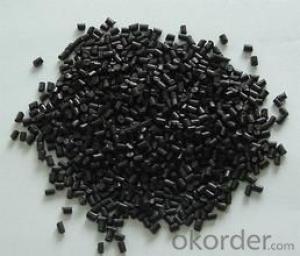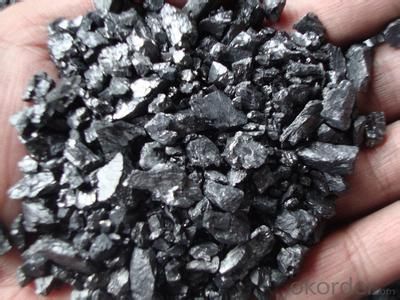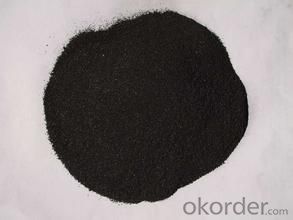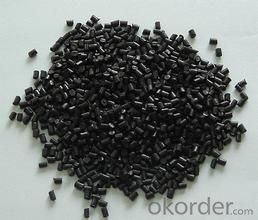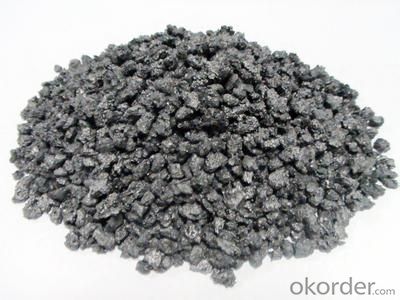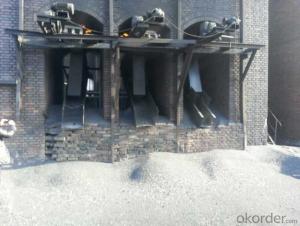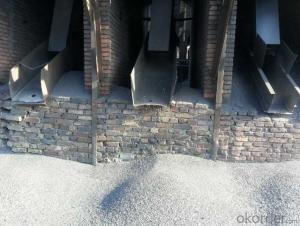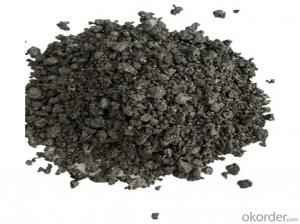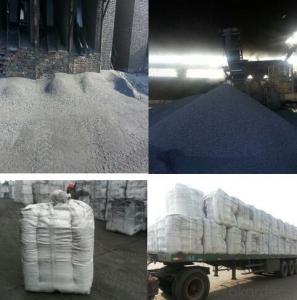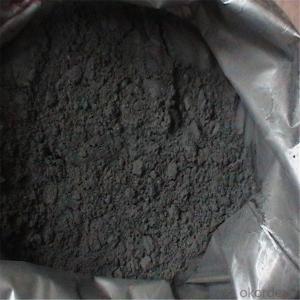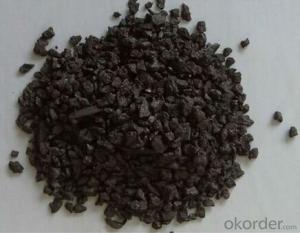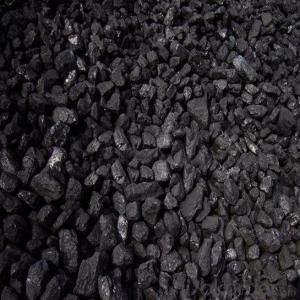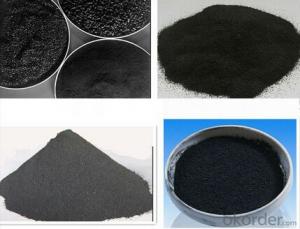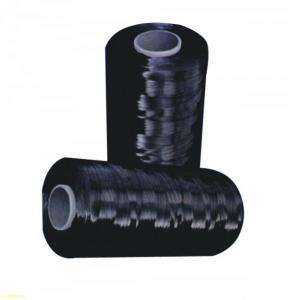Recarburizer Graphitized petroleum coke GPC Carbon addtive Carbide Recarburizer Carburant
- Loading Port:
- Qingdao
- Payment Terms:
- TT OR LC
- Min Order Qty:
- 1000 kg
- Supply Capability:
- 30000000 kg/month
OKorder Service Pledge
OKorder Financial Service
You Might Also Like
Specification:
- Professional Manufacturer
- Low Sulphur Content
- High Absorption Rate
Professional Manufacturer
As an ideal carbon additive and intermediate reactor, our recarburizer has been widely used in different industries like metallurgy, chemistry, machinery, electricity, etc. We can make different sizes and grades of recarburizer to meet your special needs.
As one of the leading companies in this field, we have a number of independent intellectual property rights and strong R & D capabilities. Our business ranging from the production of graphite material to precision machining of graphite parts and graphite molds.
Our recarburizer has the features of high carbon, low sulphur, nitrogen and harmful impurities. So it has been widely used for steel-smelting, casting, brake pedal and friction material. | |||||
Product Specification | |||||
Product No. | Fixed Carbon (Min) | Sulphur | Ash | V.M | Moisture |
Max | Max | Max | Max | ||
DT-CA-01 | 97.00% | 0.50% | 1.50% | 1.50% | 0.50% |
DT-CA-02 | 98.50% | 0.50% | 0.80% | 0.80% | 0.50% |
DT-CA-03 | 98.50% | 0.50% | 0.80% | 0.80% | 0.50% |
DT-CA-04 | 98.50% | 0.50% | 0.50% | 0.50% | 0.50% |
DT-CA-05 | 98.50% | 0.35% | 0.80% | 0.80% | 0.50% |
DT-CA-06 | 98.50% | 0.35% | 0.50% | 0.50% | 0.50% |
DT-CA-07 | 99.00% | 0.35% | 0.50% | 0.50% | 0.50% |
DT-CA-08 | 97% | 0.05% | 1.50% | 1.50% | 0.50% |
DT-CA-09 | 98.50% | 0.05% | 0.80% | 0.70% | 0.50% |
DT-CA-10 | 95% | 0.30% | 3.50% | 1.50% | 0.50% |
DT-CA-11 | 99% | 0.03% | 0.50% | 0.50% | 0.50% |
Remark:The above mentioned grain sizes are recommended standard, if your have special requirements, please feel free to contact us. | |||||
Consistent Quality Control
The whole management process is strictly complied with the ISO9001-2000 quality management system. our recarburizer has earned its reputation for exceptional carbon absorption performance and is welcomed by global customers from Japan, USA, Korea, Europe etc.
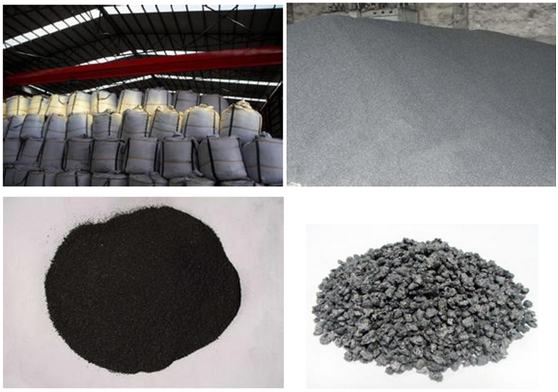
- Q: What is carbon neutral?
- Carbon neutral refers to the state in which an individual, organization, or activity has achieved a balance between the amount of carbon dioxide emitted into the atmosphere and the amount that is removed or offset. It is a term commonly used in the context of addressing climate change and reducing greenhouse gas emissions. To become carbon neutral, one must first measure their carbon footprint, which includes calculating the amount of greenhouse gases produced through activities such as energy consumption, transportation, and waste management. After identifying the emissions, steps are taken to reduce them through various means, such as energy efficiency improvements, use of renewable energy sources, and sustainable practices. While reducing emissions is crucial, it is often difficult to completely eliminate carbon emissions. In such cases, carbon offsets can be used to compensate for the remaining emissions. Carbon offsets involve investing in projects that reduce or remove greenhouse gases from the atmosphere, such as reforestation, renewable energy initiatives, or methane capture projects. By achieving carbon neutrality, individuals, organizations, or activities can claim that they are not contributing to the increase of greenhouse gases in the atmosphere. This is an important goal in the fight against climate change, as it helps to mitigate the negative impacts of carbon emissions and promotes a more sustainable and environmentally friendly future.
- Q: What is carbon sequestration and how does it work?
- Carbon sequestration is the process by which carbon dioxide (CO2) is captured and stored, preventing it from being released into the atmosphere and contributing to climate change. This process is vital in combating global warming, as CO2 is a greenhouse gas that traps heat and leads to the Earth's temperature rising. There are several methods of carbon sequestration, but the most commonly used ones include terrestrial, oceanic, and geological sequestration. Terrestrial sequestration involves capturing CO2 from the atmosphere and storing it in plants, trees, and soil. This can be achieved through afforestation (planting new forests), reforestation (restoring deforested areas), and adopting sustainable agricultural practices that enhance soil carbon storage. Oceanic sequestration, on the other hand, involves storing CO2 in the oceans. This method relies on the natural ability of the oceans to absorb and store large amounts of CO2. By enhancing the ocean's capacity to capture CO2, such as through the use of algae or other marine plants, we can effectively reduce the concentration of CO2 in the atmosphere. Geological sequestration involves capturing CO2 from industrial sources, such as power plants or factories, and injecting it deep underground into geological formations. These formations, such as depleted oil and gas reservoirs or saline aquifers, act as natural storage sites for the captured CO2. Over time, the injected CO2 becomes trapped and mineralizes, permanently storing it away from the atmosphere. Additionally, carbon sequestration can also occur through technological advancements, such as direct air capture (DAC) and carbon capture and storage (CCS). DAC involves using machines or devices to directly capture CO2 from the air, while CCS focuses on capturing CO2 emissions from industrial processes before they are released into the atmosphere. Once captured, the CO2 can be transported and stored underground, either in geological formations or in depleted oil and gas reservoirs. Overall, carbon sequestration is a crucial tool in mitigating climate change. By capturing and storing CO2, we can reduce the concentration of greenhouse gases in the atmosphere, helping to stabilize the Earth's climate. However, it is important to note that while carbon sequestration is an important solution, it should not be seen as a standalone solution. Combining carbon sequestration with other mitigation strategies, such as reducing emissions and transitioning to renewable energy sources, is essential for effectively combating climate change.
- Q: How does carbon affect the formation of avalanches?
- Carbon does not directly affect the formation of avalanches. Avalanches occur primarily due to factors such as snowpack stability, slope angle, and weather conditions. However, carbon emissions and climate change can indirectly impact avalanche formation by affecting snowpack stability. Rising carbon dioxide levels in the atmosphere contribute to global warming, which in turn affects the overall climate. As temperatures increase, it leads to changes in precipitation patterns, snowfall amounts, and snowpack characteristics. Warmer temperatures can cause rain instead of snow, leading to a less stable snowpack. In addition to altered precipitation patterns, climate change can also lead to the melting and refreezing of snow, creating weak layers within the snowpack. These weak layers, combined with subsequent snowfall and wind, can result in unstable snowpacks that are prone to avalanches. Furthermore, carbon emissions contribute to the overall warming of the planet, which can lead to glacier retreat. Glaciers act as natural barriers and stabilizers in mountainous regions, reducing the likelihood of avalanches. As glaciers shrink, they leave behind unstable slopes, increasing the potential for avalanches. It is important to note that while carbon emissions and climate change have an indirect influence on avalanche formation, they are not the sole or primary cause. Local weather conditions, slope angles, and snowpack stability assessments conducted by avalanche experts play a more immediate role in determining the likelihood of an avalanche occurring.
- Q: Speak in detail! I am ~ carbon Roast Lamb Leg lamb chops lamb barbecue ah ~ ~ how to do with practice video line! And how do you bake the oven?
- Step 2: prepare garlic paste, starch paste, mixed evenly, with the barbecue. The purpose is to make the lamb roast outside tender, and not paste, garlic flavor rich, delicious, very delicious, this is a unique secret recipe, dedication. Step 3: students after adding charcoal, grill, the best 30 cm distance between the grill with charcoal, around to gather, the formation of hot absolute direction, to avoid heat loss. Lamb must be able to rack up and down around the inversion freely, to evenly bake. Bake for 7 minutes until the lamb cooked, mashed garlic paste to wipe, scorched yellow Maoyou creaking, sprinkle with pepper and natural. Time to master almost on the line. Because mutton has the distinction between the old lamb and the lamb, it is difficult to grasp the baking time. If you use a home electric oven, you'll need to marinate the mutton first. Methods: fresh meat (lean half) dice, into the pot, cumin, pepper, fennel, two, ginger,
- Q: When is gold resistance better? When will carbon resistance be better?
- Metal film resistance, high precision, overload capacity, high temperature coefficient, but the price is also higher. Commonly used in some demanding or more accurate circuit, such as instrumentation, precision power supply. Carbon film resistors have high cost performance and low cost, but they have larger errors. A large number of applications in civil electrical products. Such as television, air conditioning, stereo and so on.
- Q: How is carbon used in the production of batteries?
- Due to its unique properties, carbon is crucial in the manufacturing of batteries. It serves as an electrode material in primary and secondary batteries. When it comes to primary batteries, carbon acts as the cathode material. It plays a crucial role in facilitating the chemical reactions that occur during the discharge process, allowing the flow of electrons. The high conductivity of carbon is essential for efficient electron transfer, ensuring effective power delivery. Moreover, carbon's stability and low reactivity make it an excellent choice for durable primary batteries. In the case of secondary batteries, such as lithium-ion batteries, carbon is utilized in both the anode and cathode. The anode is composed of graphite, a type of carbon that can intercalate lithium ions during charging and release them during discharging. This process enables the reversible storage and release of energy, making graphite an ideal material for the anode. Carbon also enhances the overall performance of the cathode in secondary batteries. Carbon-based materials, like carbon black, are incorporated into the cathode to improve electrical conductivity and increase the available surface area for reactions. This results in higher energy and power densities, ultimately enhancing the battery's overall performance. Furthermore, researchers are exploring the use of carbon additives, such as carbon nanotubes or graphene, to further enhance battery performance. These carbon-based materials possess unique properties, including high surface area, electrical conductivity, and mechanical strength. These properties have the potential to improve energy storage capacity and battery lifespan. In conclusion, carbon plays a vital role in battery production by enabling efficient electron transfer, energy storage, and release. Its conductivity, stability, and ability to intercalate ions make it an essential component in both primary and secondary batteries, contributing to the advancement of energy storage technology.
- Q: How do you use carbon fourteen to measure the age?
- Then, carbon - 14 dating method is to determine the remains of ancient age? Originally, cosmic rays can produce radioactive carbon -- 14 in the atmosphere, and can enter all living tissue carbon dioxide and oxygen - synthesis combined, first for the absorption of plants, after the animal into a plant or animal. As long as they live. Continuous absorption of carbon - 14, to maintain a certain level in the body. When the organism dies, which will stop breathing carbon - 14, within their organization, with a half-life of 14 carbon began 5730 years of decay and gradually disappear. For any carbon containing material, as long as the determination of the remaining 14 of the content of radioactive carbon you can, that the age of 14. Carbon dating method is divided into conventional carbon - 14 dating method and carbon - 14 accelerator mass spectrometry dating two. At that time, since it is invented by Libby conventional carbon - 14 dating method, this 1950. The technology and application of methods have significant progress in the world, but its limitations are obvious, namely the time measurement must use a large number of samples and longer. Thus, carbon - 14 dating accelerator mass spectrometry technology developed. Carbon - 14 accelerator mass spectrometry dating method has unique advantages.
- Q: Paint paint fluorocarbon paint which expensive?
- Paint is divided into two categories, a class of low temperature baking paint, curing temperature of 140 degrees -180 degrees, and the other category is called high temperature baking paint, its curing temperature is 280 degrees -400 degrees.High temperature baking also known as Teflon (Teflon) English called Polytetrafluoroetylene, referred to as Teflon, PTFE and F4. High performance special Teflon coating is fluorine coating resin with polytetrafluoroethylene, English name for Teflon, because the pronunciation of reason, commonly known as Teflon, Tie Fulong, Teflon, Teflon and so on (all Teflon transliteration).
- Q: Why are biological molecules carbon based molecular aggregates?
- Because living things are living organisms, most of them consist of organic compounds, which are carbon compounds, and carbon chains are the main body
- Q: How is carbon used in the production of fuels?
- Fuels production heavily relies on carbon, which serves as the primary element in fossil fuels like coal, oil, and natural gas. These fuels are formed through the decomposition of ancient plants and animals over millions of years, a process called carbonization. Carbonization involves subjecting organic materials to prolonged exposure to high temperature and pressure, resulting in the formation of hydrocarbon-rich substances. For instance, coal consists mainly of carbon, with traces of other elements. When coal is burned, the carbon reacts with oxygen, releasing heat energy. This heat can be utilized to generate steam, which then powers turbines for electricity production or industrial engines. Similarly, oil and natural gas, which are predominantly carbon-based, are extracted from underground reservoirs. These hydrocarbons can undergo refining to produce various fuel types such as gasoline, diesel, and jet fuel. The combustion of these fuels in engines or power plants releases energy for transportation and electricity generation. Aside from fossil fuels, carbon plays a crucial role in the production of alternative fuels like biofuels. Biofuels are derived from renewable sources such as plants, algae, or agricultural waste. The carbon within these organic materials can be converted into ethanol or biodiesel through processes like fermentation or transesterification, respectively. These biofuels can then be used as substitutes for conventional fuels, reducing greenhouse gas emissions and lessening reliance on non-renewable resources. In conclusion, carbon is a vital component in fuel production, whether obtained from fossil fuels or renewable sources. Its combustion generates energy that powers various sectors including electricity, transportation, and industry. Nevertheless, it is crucial to explore and adopt sustainable alternatives like biofuels and renewable energy sources to mitigate the negative environmental impacts associated with carbon emissions.
Send your message to us
Recarburizer Graphitized petroleum coke GPC Carbon addtive Carbide Recarburizer Carburant
- Loading Port:
- Qingdao
- Payment Terms:
- TT OR LC
- Min Order Qty:
- 1000 kg
- Supply Capability:
- 30000000 kg/month
OKorder Service Pledge
OKorder Financial Service
Similar products
Hot products
Hot Searches
Related keywords



